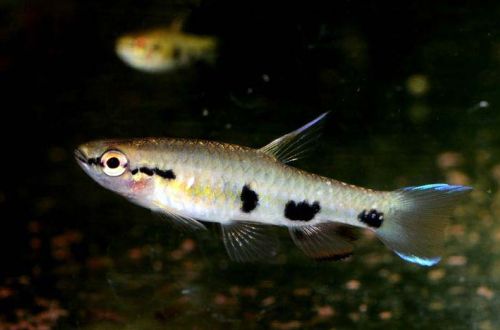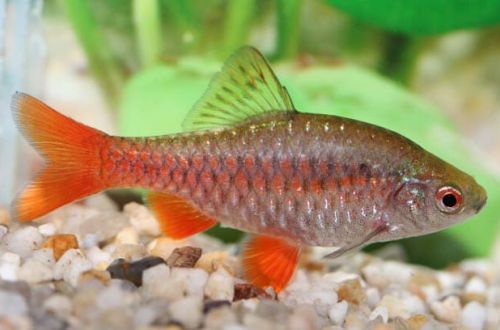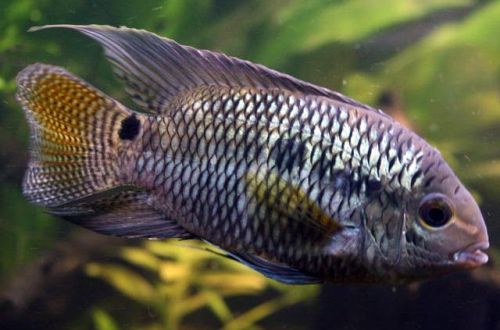
Pyrrulina tape
Pyrrhulina vittata, scientific name Pyrrhulina vittata, belongs to the family Lebiasinidae (Lebiasinidae). The fish is native to South America, found in the upper reaches of the Amazon River basin. Inhabits small streams and rivers flowing under the canopy of the tropical forest.

Contents
Description
Adult individuals reach a length of just over 3 cm. The color is gray-silver with a pattern of three large dark spots. The fins are translucent with a bluish edging. Sexual dimorphism is weakly expressed. Males look slimmer than females, which is especially evident during the spawning period.
Behavior and Compatibility
Peaceful moving fish. They prefer to be in a group of 8-10 individuals. Compatible with other species of similar size and temperament. Large tankmates can be a potential hazard. If any are planned, then it is desirable to acquire those who live in the bottom layer and rarely swim to the surface, for example, catfish.
Brief information:
- The volume of the aquarium – from 80 liters.
- Temperature – 23-27°C
- Value pH — 6.0–7.5
- Water hardness – 5–20 dH
- Substrate type – any
- Lighting – subdued
- Brackish water – no
- Water movement is weak
- The size of the fish is up to 3,5 cm.
- Nutrition – any food (floating) with a high protein content
- Temperament – peaceful
- Keeping in a group of 8-10 individuals
Maintenance and care, arrangement of the aquarium
The optimal size of the aquarium for a small flock of Pyrrulin tape starts from 80 liters. The surface area is more important than the depth of the tank because the fish need space to swim. It is also necessary to provide places for shelters in the form of plants floating on the surface. The presence of plants with wide leaves reaching the surface is welcome. They can be used as a place for spawning. The design of the lower tier is not essential and is selected at the discretion of the aquarist or based on the needs of other fish.
Pyrrulina vittata needs clean, warm water. Sensitive to high nitrate concentrations, which means regular aquarium maintenance and trouble-free operation of the filtration system. When choosing a filter, it is worth giving preference to a model that does not cause excessive flow, since Pyrrulins are not adapted to life in conditions of strong water movement.
They tend to jump out of the water, so the aquarium must be covered or have a lid.
Food
The basis of the diet will be non-sinking food with a high protein content. Live food would be a good addition.
Breeding / breeding
The fish lay their eggs on the lower surface of leaves floating on the surface or, in the absence of the latter, directly on the aquarium wall near the air/water boundary. The incubation period lasts about 3 days. There is no parental care for the emerging fry.





